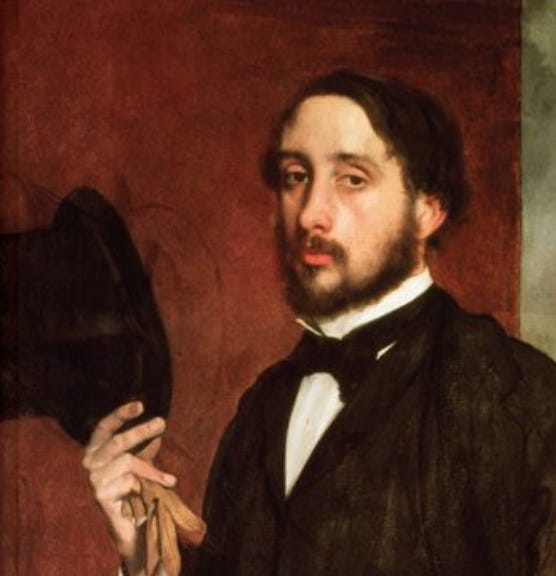“Cinderella’s Diary” by Ron Koertge from Vampire Planet. © Red Hen Press, 2016.
ORIGINAL TEXT AND AUDIO - 2016
It was on this day in 1954 that the first part of the Lord of the Rings trilogy came out, The Fellowship of the Ring. It was the sequel to J.R.R. Tolkien’s The Hobbit, which was published in 1937. Tolkien had written The Hobbit for his own amusement and didn’t expect it to sell well. It’s the story of Bilbo — a small, human-like creature with hairy feet — who goes on an adventure through Middle Earth and comes back with a magical ring.
J.R.R. Tolkien once wrote: “I am in fact a hobbit in all but size. I like gardens, trees, and unmechanized farmlands. I smoke a pipe, like good, plain food, detest French cooking […] I am fond of mushrooms, have a very simple sense of humor […] go to bed late and get up late (when possible). I do not travel much.”
The Hobbit sold pretty well, partly because C.S. Lewis gave it a big review when it came out. And so Tolkien’s publisher asked for a sequel. Tolkien decided the new book would be about Bilbo’s nephew Frodo, but for a long time he had no idea what sort of adventure. Finally, he decided it would be about the magical ring, though the ring had not been such an important part of The Hobbit.
Tolkien spent the next 17 years working on The Lord of the Rings. He was a professor at Oxford. He had to write in his spare time, usually at night, sitting by the stove in the study in his house.
He was well into his first draft by the time World War II broke out in 1939. He hadn’t set out to write an allegory, but once the war began, he started to draw parallels between the war and the events in his novel: the land of evil in The Lord of the Rings, Mordor, was set east of Middle Earth, just as the enemies of England were to the east.
The book became more and more complicated as he went along. It was taking much longer to finish than he’d planned. He went through long stretches where he didn’t write anything. He thought about giving up the whole thing. He wanted to make sure all the details were right, the geography, the language, the mythology of Middle Earth. He made elaborate charts to keep track of the events of the story. His son Christopher also drew a detailed map of Middle Earth.
Finally, in the fall of 1949, he finished writing The Lord of the Rings. He typed the final copy himself sitting on a bed in his attic, typewriter on his lap, tapping it out with two fingers. It turned out to be more than a half million words long, and the publisher agreed to bring it out in three volumes. The first came out on this day in 1954. The publisher printed just 3,500 copies, but it turned out to be incredibly popular. It went into a second printing in just six weeks. Today more than 150 million copies have been sold around the world. It is considered one of the best-selling books of all time.
It’s the birthday of Edgar Degas (1834), the French Impressionist painter best known for his studies of female dancers, like The Dancing Class (1871) and The Dance Class (1874). In 1880, his sculpture The Little Fourteen-Year-Old Dancer was exhibited, but drew criticism for its realism, with some critics deeming it “ugly.” Degas had dressed his dancer in a cloth tutu and given her real hair. He never exhibited any sculpture in public again during his lifetime.
Degas was born in Paris. His father was a banker and his mother an amateur opera singer from New Orleans. He was a precociously talented child, but when he came of age, his father urged him to attend law school, which Degas did, though he didn’t apply himself to his studies and soon left to study at the École des Beaux Arts. He also received permission to “copy” at the Louvre in Paris, a common practice for aspiring artists in the 19th century, who would gather to draw from works by Raphael and Delacroix. Degas met the artist Ingres, who told him, “Draw lines, young man, and still more lines, both from life and memory, and you will become a good artist.”
By 1862, he’d befriended fellow painter Edward Manet and been rejected by the prestigious Salon, the official art exhibition of the Académie des Beaux-Arts in Paris, which found his work unfinished and hasty. Degas favored interesting angles for his subjects, which may have been due to his poor eyesight. He said: “No art was ever less spontaneous than mine. What I do is the result of reflection and of the study of the great masters; of inspiration, spontaneity, temperament, I know nothing.” He joined with other outsider artists to exhibit work on their own, but he was irascible, mocking Monet for painting outdoors.
Degas continued to paint ballet dancers because it earned him the most money. His anti-Semitism became virulent as he aged, though, which cost him friends and commissions. Auguste Renoir said: “What a creature he was, that Degas! All his friends had to leave him; I was one of the last to go, but even I couldn’t stay until the end.”
In his last years, nearly blind, Degas stopped painting and took to wandering the streets of Paris. He died when he was 83. After his death, acquaintances found more than 150 wax sculptures in his studio. The original sculpture of The Little Fourteen-Year-Old Dancer has since been cast in bronze.
Edgar Degas said, “If painting weren’t so difficult, it wouldn’t be so much fun.”
It’s the birthday of politician George McGovern, born in Avon, South Dakota (1922), son of a Methodist minister who played pro baseball before his ordination. As a student at Dakota Wesleyan University, he was president of the sophomore and junior classes and won an oratory contest with a speech titled “My Brother’s Keeper.” A fighter pilot in World War II, he flew 29 combat missions before his plane was badly damaged over Vienna and his navigator killed. He survived a crash landing on an island in the Adriatic Sea and won a Distinguished Flying Cross before returning for five more missions. Although both of his parents were Republicans, McGovern ran for Congress in 1956 as a Democrat and won, the first South Dakota Democrat to go to the House of Representatives in 22 years. After a losing campaign in 1960, he was elected to the Senate in 1962, and, upon re-election in ’68, emerged as a leading opponent to the war in Vietnam. He won the Democratic presidential nomination in 1972, but was unable to defeat Richard Nixon, probably because he was too liberal for the more conservative Democrats. He ran for president again in 1984, but after a third-place finish in the Massachusetts primary — the only state he’d carried in his earlier bid — he withdrew from the race.
He said, “I’m fed up to the ears with old men dreaming up wars for young men to die in.”
Be well, do good work, and keep in touch.®
To purchase this beautiful gift - Click Here






Here's a story because of a story. It's behind the big story and makes you think. I never read "Lord of the Rings," nor saw the movie, as the real world is story enough. Yes, parallels can be drawn, but we must keep in mind, it's our real world that needs fixing, and burrowing in the earth for a magic bracelet isn't the answer. Let's keep our eyes on the prize of peace, instead. As Garrison says on his glass plaque, "It's the children."